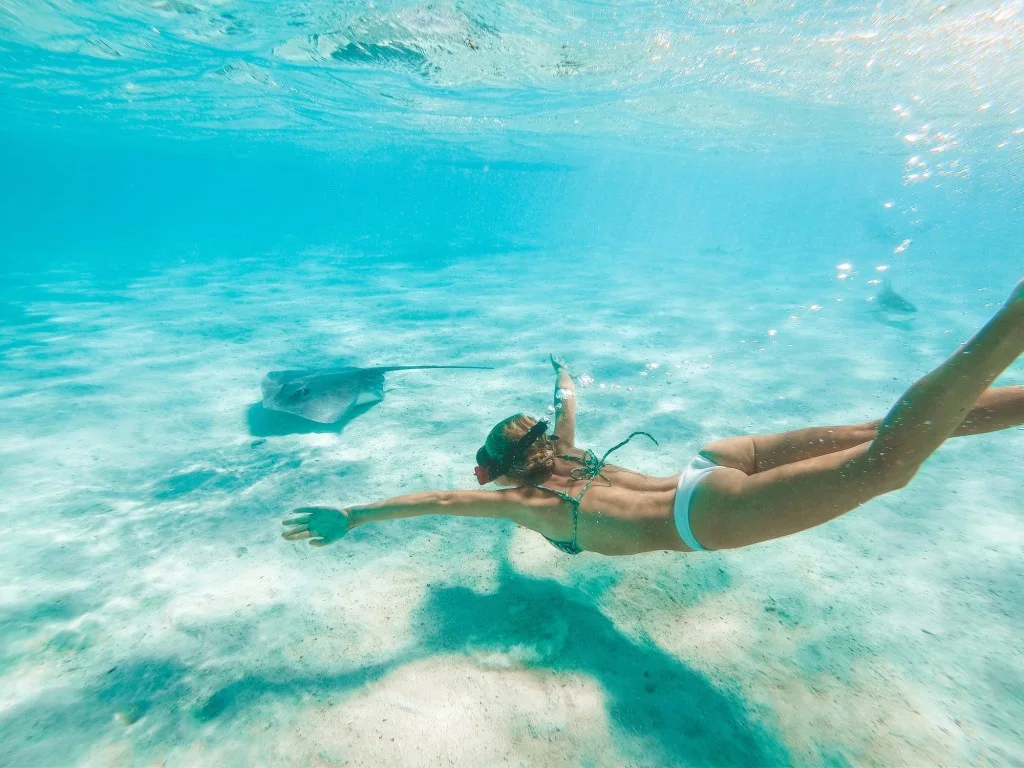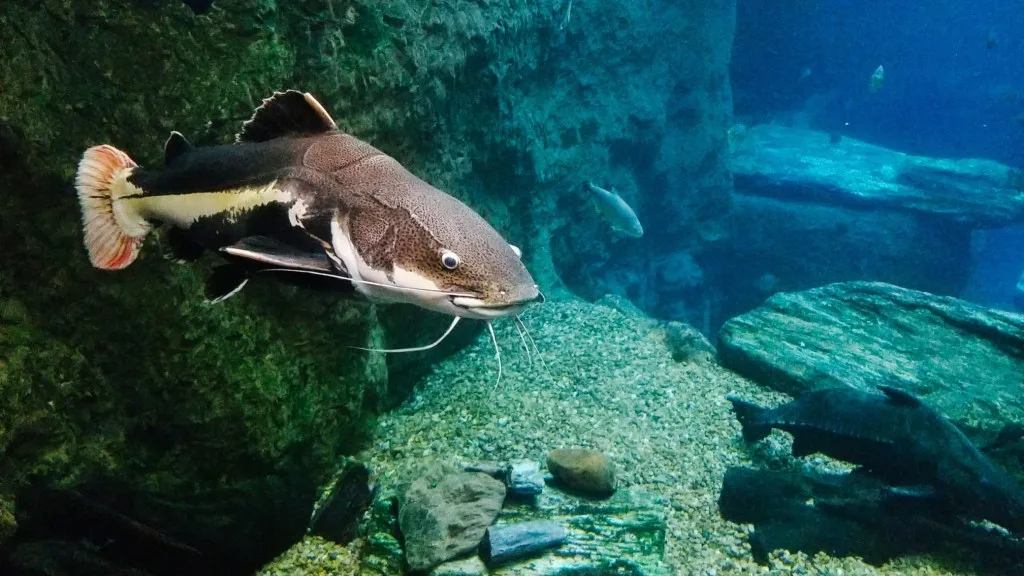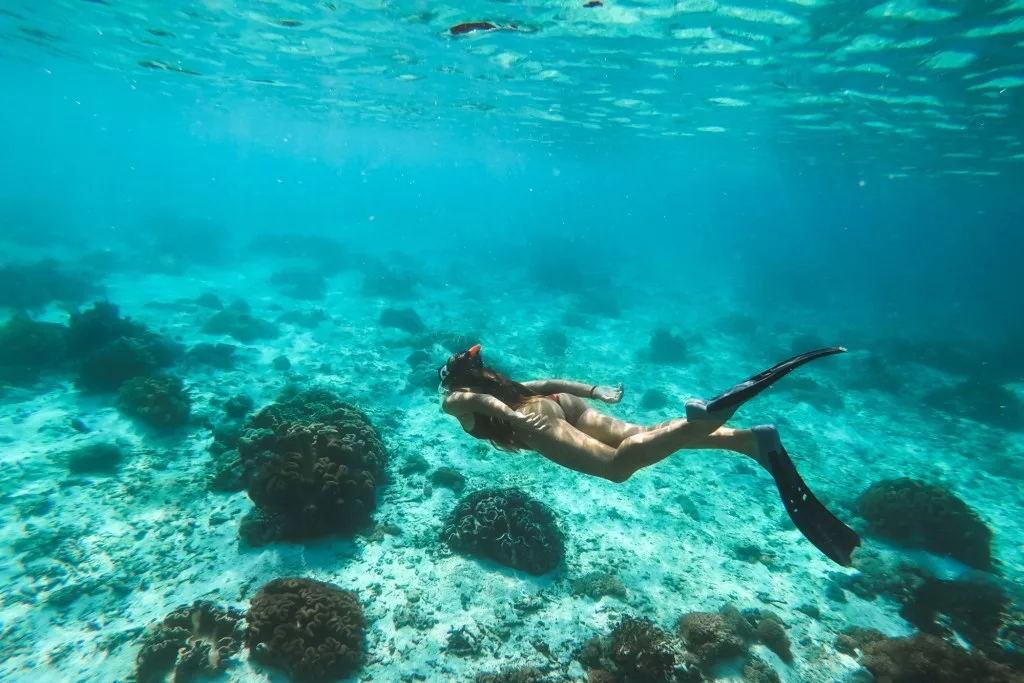Even in a developed area like the Gulf of Mexico, dangerous creatures pose a risk to unobservant beachgoers.
From Galveston, Texas, to the Florida Keys, the Gulf of Mexico is awash with human activity. Swimming, surfing, boating, and fishing are all favorite activities.
Getting into the water, though, shouldn’t be a guessing game.
We‘ll help you know which creatures you can view up close and which to avoid so your perfect beach day isn’t ruined.
Let’s dive in!
About the Gulf of Mexico
The Gulf of Mexico served as an essential trade route to the early native people who lived along its shores. The Spanish came in through the Gulf of Mexico in 1497 and began their conquest of the new world. For the next 200 years until the French came to Pensacola in 1699.
Since then, people have crowded to the Gulf of Mexico for business and pleasure. Cities like Gulf Shore, Alabama, and Pensacola, Florida provide easy access to warm, shallow waters of the Gulf. To the south, the tourist haven of Cancun, Mexico, is a favorite beach hangout.
Massive development along the coast created an influx of human activity. Unsurprisingly, the number of human and animal encounters grows every year. The usual suspects, sharks, stingrays, and jellyfish, are all present in the Gulf. But there are also lesser-known creatures to avoid.
Lionfish, hardhead catfish, and sea urchins all cause problems for humans in the Gulf. Beyond the natural world, human activity creates alien blobs in the form of tarballs. With a little bit of information, you can learn to avoid vacation-ending, or life-ending, encounters.

Sharks
About Sharks: The sea’s apex predators, sharks are one of the most feared underwater creatures. Movies like Jaws have made sure of that. But most of the 500 species of shark aren’t dangerous, and only about 30 species attack humans.
Of those 30, scientists consider just three to be the most dangerous. The great white, tiger, and bull sharks are the most likely to bite a human. In the Gulf of Mexico, you’re most likely to encounter the bull shark.
What Makes Them Dangerous: Sharks are dangerous because they’re not picky eaters and are curious. Most shark attacks aren’t deadly because the shark is simply tasting and exploring a potential meal.
Sharks are also dangerous because they don’t see well. In fact, 72% of the shark attacks in the last decade involved surfers, swimmers, or water skiers. From below, these activities make the human look like other marine life.
Bull sharks, in particular, are dangerous towards humans because they eat just about anything they can sink their teeth into. They’re most active in the fall and around dawn and dusk in the Gulf. Sharks are attracted to light, so any flashes of jewelry or feet can look like a tasty snack.
How to Avoid Them: Sharks will mostly bite if they’re hungry. Feeding time for sharks is breakfast and dinner, so avoid dusk and dawn. You can also track shark activity online through sites like Ocearch.org.
Snorkelers are the safest in the water because sharks aren’t looking at them from below.
But, sometimes you can’t avoid them. Popular wisdom is that punching a shark is your best defense. According to Andrew P. Nosal, a shark specialist, it turns out that grabbing at eyes and gills is a better defense.
Pro Tip: If you’ve seen Jaws, you might not be so keen to go skinny dipping in the Gulf of Mexico. Still want to go for a swim? Before you do, find out Is Skinny Dipping Okay (and Legal) When You’re Camping?
Stingrays
About Stingrays: Stingrays are a mostly docile species that live in the Gulf. They’re different from flatfish like flounder and are related to sharks. There are dozens of species in the Gulf of Mexico. You’re most likely to encounter Cownose, Southern, and Atlantic stingrays.
Unlike sharks, stingrays only attack in defense, but they have a powerful weapon. The stinger on the stingray is in the tail and packs an excruciating punch.
What Makes Them Dangerous: The most significant danger with stingrays is their sting. If surprised, stingrays will attack and inject a potent toxin into their attacker. The toxin can cause muscle cramps, intense pain, and swelling. If you leave the injury alone, it can even lead to death.
How to Avoid Them: Avoiding stingrays can be tricky because they camouflage perfectly in the sand. The best way is to shuffle your feet when you’re walking in the water so that they know you’re coming and can swim away. You can also throw a rock into the area you’re planning to swim to scare them away.

Lionfish
About Lionfish: Lionfish are one of the newest dangerous creatures in the Gulf of Mexico. They’re an invasive species and are making waves. People have kept lionfish in aquariums for decades because of their markings. They’re striped with brown or maroon and white and have long tentacles on top. The things that make them beautiful also make them dangerous.
What Makes Them Dangerous: Lionfish eat other sea creatures, and their tentacles pack a punch. If you touch a lionfish, you’re likely to notice. Their venom causes extreme pain, swelling, labored breathing, and even paralysis.
How to Avoid Them: Avoiding lionfish is easy by the beach. However, they can be harder to avoid once you get out into the depths. Rocky crevices, outcroppings, and reefs are all their habitat. If you’re swimming around these areas, keep an eye out. If you don’t, they’ll let you know.
Sea Urchin
About Sea Urchins: You’ve probably only seen sea urchins on travel shows or in sushi bars. Swimmers and waders find these spiny creatures in the warm waters of the Gulf. They live in shallow water near sandy beaches and are hard to miss.
What Makes Them Dangerous: Uni (sea urchin eggs) may be a tasty treat, but the spines that protect it are dangerous. If sea urchin spines break the skin, they cause a painful wound. You may have swelling and redness around the sting.
Also, spines may break off in your skin and need to be removed by a doctor. If you get stung more than once, you may experience shortness of breath, shock, and even death.
How to Avoid Them: With sea urchins, the best thing to do is keep your eyes open. Look before stepping and wear water shoes if you can. Also, avoid areas where sea urchins live at night. They’re almost impossible to see in the dark, but you can’t miss the sting.
Hardhead Catfish
About Hardhead Catfish: Hardhead catfish look somewhat like their freshwater cousins. The main difference is a bony plate that spans their bodies. Hardhead catfish feed on shrimp, small fish, crabs, and whatever they can find. They’re known for the spines that extend from their fins when excited or threatened.
What Makes Them Dangerous: Hardhead catfish ooze a mild toxin that infects any cut they inflict. If a hardhead cuts you, expect to need medical treatment. Hardheads are also easy to catch, so be aware if you’re fishing around the northern Gulf Coast.
How to Avoid Them: You’re most likely to encounter hardheads while fishing. To reduce the amount you catch, try a floating bait. Hardheads are generally bottom dwellers. Artificial bait will also reduce hits from hardheads.
They’re not as attracted to unscented lures as well. If you do catch one, or a dozen, they’re difficult to clean carefully. They have a very fishy flavor but can make a delicious soup.

Jellyfish
About Jellyfish: Jellyfish are a squishy addition to the dangerous creatures list. They’re invertebrates, and make no bones about it, should be avoided. While they’re beautiful in aquariums, they’re a scourge to swimmers, boaters, and anglers alike in open water.
“Sea lice,” common in the Gulf of Mexico, aren’t actually lice but are the larva of jellyfish and much harder to avoid than the adults.
What Makes Them Dangerous: Beneath their translucent bodies, jellyfish have poisonous tentacles. They’re even dangerous in death, so it’s critical to give them a lot of space if you see one washed up on the beach.
The larval “sea lice” are common around the Gulf and are a painful encounter for swimmers and divers. If you swim through a swarm of larvae, painful rash-like welts could cover your body.
How to Avoid Them: Jellyfish are common in swimming areas. However, you can avoid them if you pay attention. Beach authorities commonly report large concentrations of jellyfish and sea lice. If you’re swimming in jellyfish-infested areas, you can also wear protective clothing. And if you see a man o’ war washed up on the beach, steer clear!
Pro Tip: Want to RV in some sand and sun? We found The 5 Most RV Friendly Beaches in USA.
Barracuda
About Barracuda: Unlike many of the creatures on this list, the barracuda is aggressive. They can grow up to five feet long and have a mouth full of sharp-edged teeth. Young barracuda swim in groups but tend to swim alone as they age. Feeding barracuda strike quickly and ferociously into schools of fish and sometimes swimmers.
What Makes Them Dangerous: Their ferocity and razor-sharp teeth make barracuda something to avoid. Swimmers often underreport barracuda attacks. There have been reports of divers losing fingers and kayakers attacked by barracuda. These incidents are rare and often caused by poor eyesight.
How to Avoid Them: Barracuda is unpredictable. They’re just as likely to swim by or avoid a snorkeler as they’re to attack. They’re attracted to shiny objects, so removing jewelry before diving is a good idea. Stay calm when swimming around barracuda and no sudden moves. You should be fine.

Tar Balls (Humans)
About Tar Balls: Of course, one of the more dangerous creatures in the Gulf of Mexico is us – humans. Between plastic and pollution, we’ve caused much damage to its waters.
For example, in 2010, the Deepwater Horizon oil spill produced a massive outbreak of tiny, oily particles on Gulf beaches. Tar balls are a beach hazard that’s almost entirely a result of human activity. Beyond being messy, tar balls cause severe problems for local wildlife.
The nasty globs can damage beaches to the point that professionals must remove the top layer of sand. Natural oil leaks can also cause tar balls. But it’s much more likely that it’s a human mess if you see them on the beach.
What Makes Them Dangerous: When tar balls first appeared, scientists suspected they were just a nuisance to humans. Auburn University later discovered that something more menacing is in the tar balls.
The same bacteria that cause illness from bad seafood live in the tarballs. If you get one stuck to you and it comes in contact with a wound, you better watch out. The infection can lead to serious complications and even death.
How to Avoid Them: The best way to avoid tar balls is to stay away from them when they’re present. Local authorities will have a cleanup effort underway and need the beach clear.
Be Aware of Dangerous Creatures and What Your Impact Is
Like humans, all of these dangerous creatures thrive in the waters of the Gulf of Mexico. There are many ways to safely enjoy the beaches and waters of the Gulf without running into them. Most cases involve some kind of defense mechanism.
By avoiding these creatures when possible, we reduce the likelihood of being hurt. Be aware of your surroundings. Listen to local authorities and beach conditions. Make sure you can enjoy these spaces for years to come.
Have you ever been swimming in the Gulf of Mexico? Tell us in the comments!
Discover the Best Free Camping Across the USA
To be honest with you, we hate paying for camping. There are so many free campsites in America (with complete privacy).
You should give it a try!
As a matter of fact, these free campsites are yours. Every time you pay federal taxes, you’re contributing to these lands.
Become a FREE CAMPING INSIDER and join the 100,000 campers that love to score the best site!
We’ll send you the 50 Best Free Campsites in the USA (one per state). Access the list by submitting your email below: